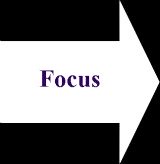Home Page | Blog | Managing | Marketing | Planning | Strategy | Sales | Service | Networking | Voice Marketing Inc.
An Effective Marketing Research Plan Strengthens Your Marketing
Use Different Types of Market Research
Your marketing research plan needs to define market research approaches and include different types of market research to undertake for maximum impact. Strengthen your marketing approach with a highly targeted marketing research process that will help you better understand your marketplace.
Search This Site

A marketing research plan always needs to be part of your overall business plan.
For example, without a good marketing research process it will be difficult for you to know how your customers feel about your service and your products (until it's too late and they stop buying).
Your marketing research plan will help you gather information about your markets and help you complete a market segmentation and focus on target marketing.
Research can also help you with making good decisions, such as whether or not to grow your business (and to thoroughly consider the risks of growth) or add new products or services.
Research is also useful when you're planning strategies for providing good customer service (and you use feedback from your customers, potential customers, and suppliers), and when recruiting employees and hiring additional sales people will have a positive impact, and much more.
Define Market Research:
Market research is more science than it is art. The marketing research plan steps below are a high level view of the marketing research process.
It is important to handle this process correctly because you will likely make decisions based on the research. Consider using a variety of types of market research (for example, brand research, product positioning, competitive SWOT, and more). There are advantages to outsourcing this type of work (there are marketing research firms who can help you with this research) but it is important that you first understand how market research is done.
9 Steps to Your Marketing Research Plan
Before you start doing marketing research, you must define what it is you want researched (your management question or problem) - in fact, ensure that you define market research goals before you begin the process.
Include in your definition a description of the market or audience; your relationship with that market - are you currently operating in the market or are you trying to enter it; do you have mail lists, phone lists, contact information; your management question or questions; your estimated budget - time and money and resources.
Then define the research question or problem statement (some researchers use descriptive hypothesis statements - there are other types of hypotheses too).
Make sure the question is specific enough to conduct research (you don't want to frame a broad question to which you will get broad answers - not so helpful in your decision making process). The most important part of all market research is asking the question or proposing the hypothesis correctly.
- A descriptive hypothesis example: In Seattle, the December seasonally adjusted unemployment rate is 3.4 per cent of the labor force.
- A research question example: What is the December unemployment rate in Seattle?
A descriptive hypothesis can be proved true or false. A research question discovers the answer. A good hypothesis or question must be testable and it must state the variables (e.g. above Seattle, January, unemployment rate). The above research question might have been proposed by a retail store owner looking to hire additional staff for the Christmas season. (This is a very simple research proposal but effective for keeping the examples simplified and easy to understand).
Develop a market research proposal. This would include defining your research design strategy, such as purpose and scope, time period, environment and type. It might even include your plans for survey development and launch.
Design the research study. For example, you could use secondary data (in the above Seattle unemployment question, you could go to the government's website to check historical labor statistics); market surveys, experimentation, sampling, case studies, focus groups, and more.
Both qualitative and quantitative methods need to be used in market research study.
If you choose a marketing research survey, some questions to consider:
By mail, by email, on your website (consider free online surveys as an option), by-phone or in-person?
Do you want to collect the data over a period of time: contacting your survey group weekly, monthly, annually for updates? Or is it a one-time survey?
Are your questions going to be open-ended or scaled (a ranking system)?
How will you measure validity, reliability and accuracy?
If doing in-person or by-phone interviews, do the interviewers need training?
How large should the sample size be (in terms of representing the overall market)?
You can see how technically challenging and time consuming this might be.
Once you've designed your market research proposal, you need to to define the resource allocation and budget for the plan. Your approval, or go-ahead, needs to consider the value of the research and your expected outcome. Spending a lot of time and money on a small decision is wasteful and not effective.
Do a test of your market research proposal design. For example, have several people do the survey you've designed. After they've completed it, ask them if they fully understood every question. Also review the answers; often confusion is apparent in the answers (or lack of them). Find out if there was any misunderstanding or confusion and adjust your design if necessary.
Proceed with the data collection within the defined time period and sample.
Analyze and interpret the data. Look for patterns. Develop summaries. Apply statistical analysis techniques.
Report the results. And make recommendations based on the results.
The Marketing Research Process
Once the marketing research plan is completed and the results are reported, you and your management team must make decisions.
If you are not going to act on the outcome, don't do the research! Commit to acting on the outcome before you start the process. If you don't believe the outcome, then have a different look at the data or invest the time to do the research from a different perspective, and move forward.
And, remember that there are a number of types of market research that can be used for a number of different business purposes.
More-For-Small-Business Newsletter:
For more timely and regular monthly information on managing your
small business,
please subscribe here.
Additional Reading:
Return from Marketing Research Plan to Small Business Plan.
Use survey tools, research and feedback to help in decision making and problem solving.
Read more about the definition of marketing to understand how it relates to your business growth.
Conduct a market segmentation to focus on target marketing.
Build a strong Business Financial Plan to effectively manage your business.
Or return to More For Small Business Home Page.
Subscribe to
More Business Resources E-zine
Implement Your Plan: for Results

Once you've built your plan, you need to implement it.
Developing your strategy (in the plan) is the first, necessary, step. You need to know the direction you want to go, and you need the strategy and the plan to help you get there.
But once you've built the plan, you must execute it.
There is no value in building a plan that just gathers dust.
When building your business plan, make sure that you include an action plan for the strategies, techniques and tactics.
The actions need to include who's responsible for doing what; measurements for success (such as deadlines and timelines, targets and goals, costs, etc.); and why you need to take the action (in some cases, one action needs to be accomplished before subsequent ones can be launched).
As you work through the plan, make sure that you build reporting periods into the implementation: you need to know what's going on and why something is working, or not.
Make sure to communicate progress, or lack of it, throughout the organization. And re-visit the plan when and where necessary.
This Site
Focus on Your Plan

Plan for the future: lots of business owners want to get, or keep, moving forward. Planning seems to be more of a passive activity.
However, to ensure that your business goes in the right direction and that it optimizes all its opportunities, and manages its challenges, it is important to plan.
Balance your activities against the plan: make sure that you are investing your time, and money, on the elements of your business that will help you succeed.
Measure what works, and what doesn't work, and keep your focus: use your business plan as a map to guide you in the direction you want to go.







